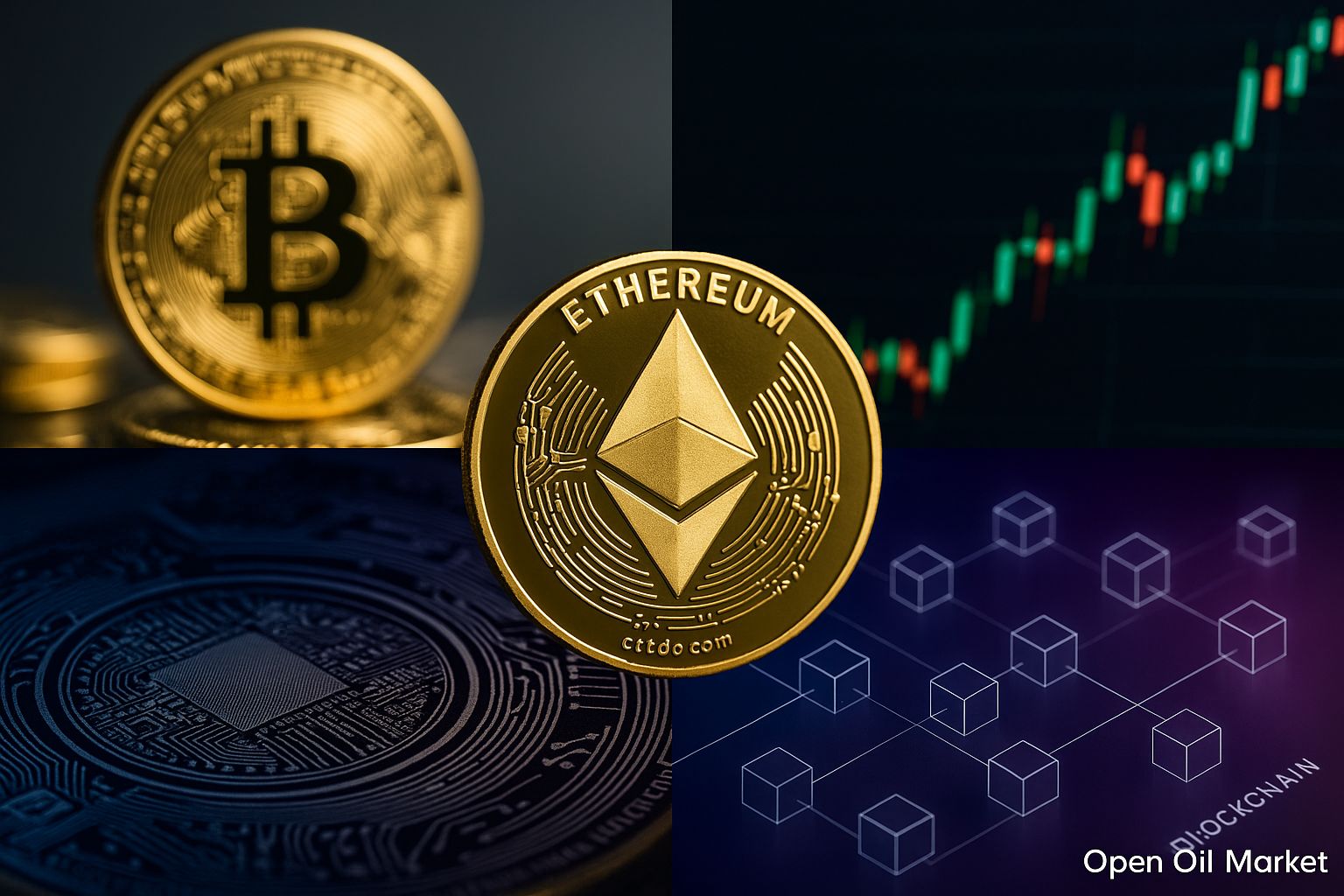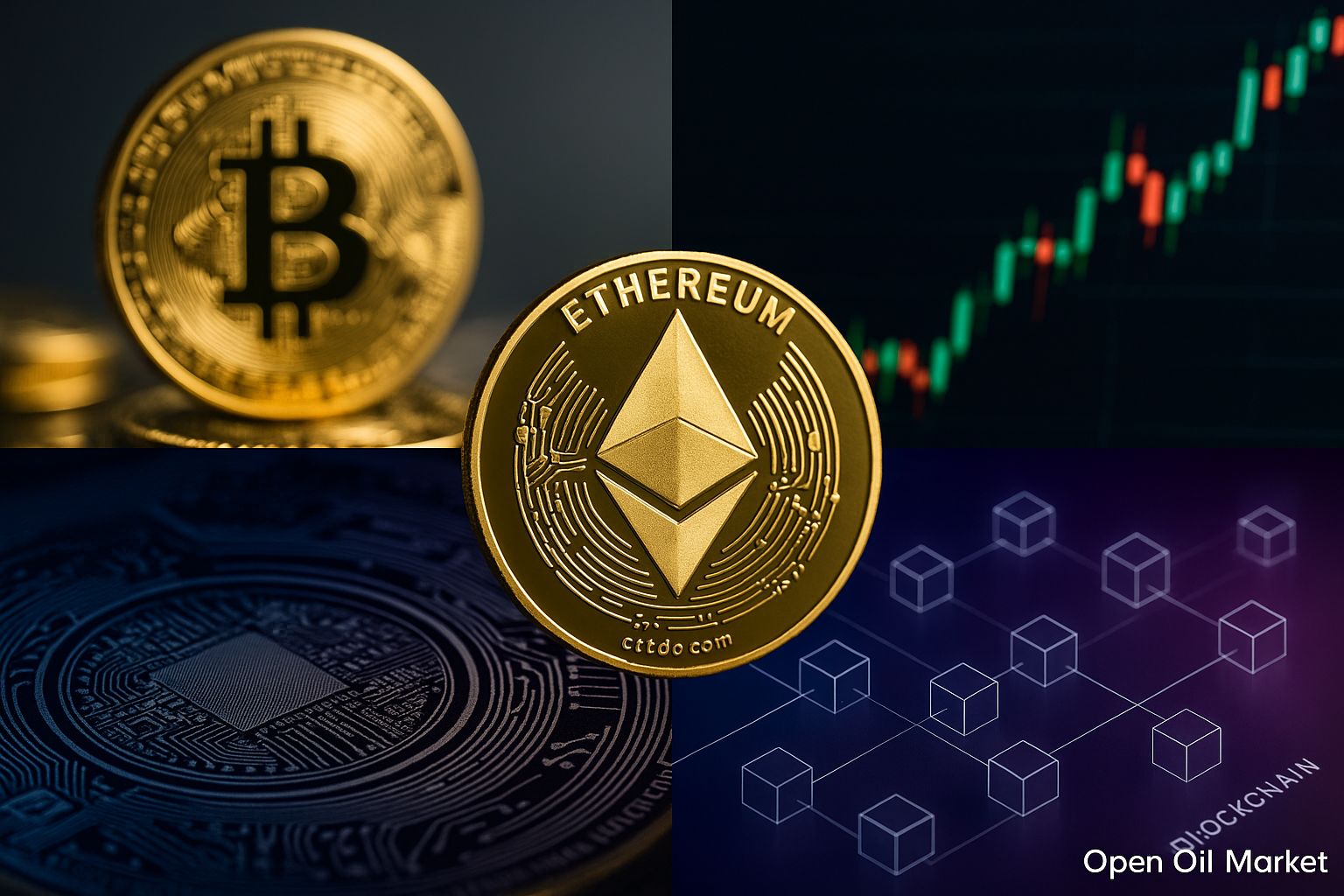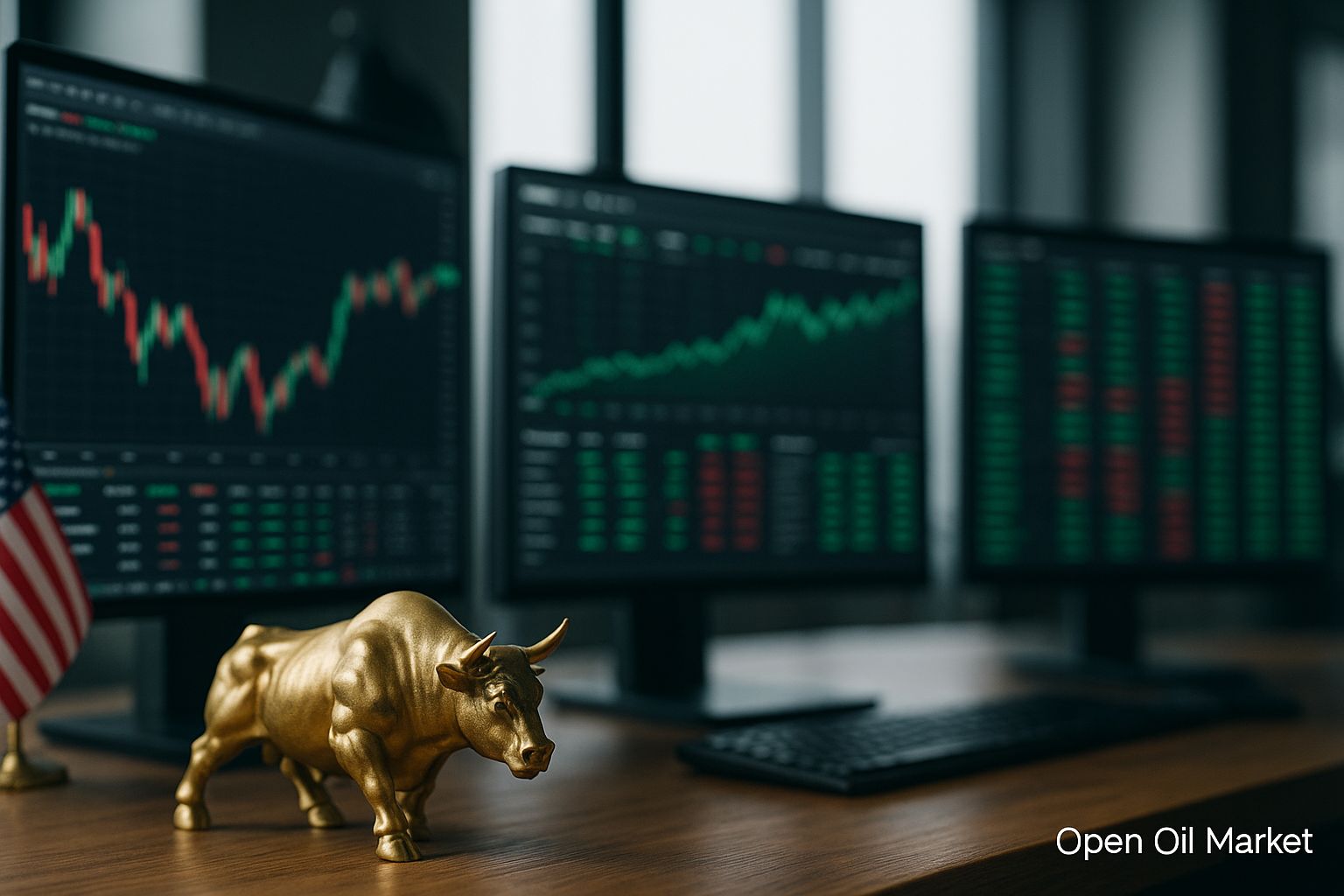
Current Cryptocurrency News as of August 27, 2025. Bitcoin Holds Record Levels, Ethereum Aims for Above $5000, Altcoins Continue Rally. Institutional Investments, DeFi, and Regulation Shape New Trends in the Crypto Market.
By the end of August, the cryptocurrency market remains near historical highs. Investors maintain a heightened appetite for risk due to favorable macroeconomic signals and a continuous influx of institutional capital. Bitcoin, after a recent record, is stabilizing at high levels and attempting to resume its upward trend, while Ethereum is trading close to its new peak. Simultaneously, many leading altcoins are continuing a robust rally, with segments of decentralized finance (DeFi) and NFTs revitalized. Authorities around the world are increasingly clarifying the rules of the game for the industry.
Bitcoin: Attempt at a New Breakthrough to Record
In the second half of August, Bitcoin (BTC) experienced a healthy correction after reaching a new historical maximum (over $124,000). In recent days, the flagship cryptocurrency has stabilized and is now consolidating around $118,000, remaining significantly above the levels at the beginning of the year. Since January, Bitcoin has more than doubled in price, solidifying its status as "digital gold" amid growing interest from both retail and institutional investors. Analysts note that the current pause following the rapid rally is of a healthy nature, allowing the market to cool off before a possible new phase of growth. The limited supply of BTC (maximum of 21 million coins) continues to act as a long-term price support factor. Major players are taking advantage of the pullback to accumulate BTC; for example, through the Bitcoin ETF from BlackRock, approximately 3% of the total Bitcoin supply has been accumulated, demonstrating the scale of institutional demand and supporting confidence in the continued upward trend.
Ethereum: Holding Record Levels
The second-largest cryptocurrency by market capitalization, Ethereum (ETH), recently established a new historical maximum, surpassing its previous peak in 2021. The ETH price rose to around $4,950, breaching the psychologically significant $5,000 threshold. In August, Ethereum gained approximately 25%, and this surge was made possible by favorable external conditions and the influx of substantial capital. The easing rhetoric from the US Federal Reserve has increased investors' interest in risk assets, leading to a reallocation of some funds from BTC to ETH. Additionally, the launch of the first spot ETFs on Ethereum provided significant inflows, at times outpacing those of Bitcoin funds. The heightened institutional demand for ETH, along with overall market optimism, has allowed Ethereum to solidify its market share. However, experts warn that such rapid growth may be accompanied by increased volatility in the near term as some investors lock in profits.
Altcoins: Continuation of the Rally
The broad altcoin market is demonstrating further growth in line with the leaders. Ripple (XRP) is holding above $3 for the first time since 2018, after legal victory over the SEC alleviated key regulatory risks associated with this token and pushed its price up. Binance Coin (BNB) is trading near ~$900, having set a new historical maximum on the back of the expanding Binance ecosystem and high activity in the BSC network. Solana (SOL) approached the $200 mark, restoring investor confidence in its high-speed blockchain after resolving last year's technical issues. Other platform projects, such as Cardano (ADA), remain among the leaders in market capitalization thanks to regular technological updates and an increasing number of decentralized applications. The meme currency Dogecoin (DOGE) also received a new influx of interest during the market's general rise: retail traders’ renewed activity has significantly increased the price of DOGE, bringing it back into the top 10. Overall, the altcoin segment is experiencing an upswing, with capital mainly flowing into projects with real utility and established reputations. Notably, amid this broad rally, Bitcoin's share in the total cryptocurrency market capitalization has dropped to around 55% – an indication of the peak of a full-fledged "alt season," when investors actively diversify their funds away from BTC.
Institutional Investments and Crypto ETFs
The robust growth of the market is supported by unprecedented activity among institutional investors. Major financial corporations are launching products related to digital assets: over the past year, ETF products for Bitcoin and Ethereum have emerged, significantly simplifying access to cryptocurrencies for a wider range of investors. The success of the spot Bitcoin ETF from BlackRock stands out, having accumulated approximately 3% of the total BTC supply in less than two years, making it one of the largest holders of Bitcoin in the world. This colossal appetite from Wall Street confirms that for many investors, the question now is not "whether to invest in cryptocurrencies," but "what percentage of their portfolio to allocate to them." Ethereum funds are also attracting substantial investments – at certain times, inflows into Ethereum ETFs have even surpassed those of Bitcoin funds, reflecting interest in a broader range of digital assets. The sizable participation of institutional capital increases market liquidity and makes it more mature, gradually reducing volatility. In 2025, institutional investments have become one of the key drivers of the crypto rally, significantly strengthening the market.
DeFi: A Second Wind for Decentralized Finance
The decentralized finance sector is experiencing a renaissance amid the overall growth of the industry. The total value locked (TVL) across all DeFi protocols now exceeds $160 billion – the highest since spring 2021. About two-thirds of this volume is situated within the Ethereum blockchain; the rest is distributed across other networks (such as Solana, among others). Leading DeFi platforms – services for staking, lending, and exchanging – have regained their positions, accumulating tens of billions of dollars and restoring user trust. A new impetus for the industry is being provided by the trend towards tokenization of real assets: tokens backed by traditional values (debt obligations, real estate, etc.) are being launched on the blockchain, attracting new large players into DeFi. Technological advancements have also played a significant role – Ethereum network fees have decreased compared to their peak levels in previous years, partly due to the launch of Layer 2 solutions, simplifying access to decentralized applications for a broader audience. While risks associated with smart contract vulnerabilities remain, current metrics clearly indicate that DeFi has once again become an integral part of the crypto economy, offering investors alternative ways to generate yields (staking, yield farming, etc.) outside of traditional banking services.
NFT: The Development of the Digital Collectibles Market
The market for non-fungible tokens (NFTs) remains significantly calmer than during the height of the frenzy in 2021, but continues to function and evolve. In 2025, the volume of NFT sales has already surpassed $3.5 billion – significantly less than the record figures in previous years, but importantly, the interest in digital collectible assets has not diminished. Investors have become much more selective: instead of mass purchasing hundreds of low-value artworks, attention has shifted to rare and truly sought-after assets. Elite collections (such as CryptoPunks, Bored Ape Yacht Club, etc.) continue to be highly valued – individual items are sold for millions of dollars. However, average prices and trading volumes are far from peak levels: the current monthly turnover in the NFT market is about $600-700 million, while at the height of the boom in 2021, this figure surpassed $2 billion per month. Meanwhile, the industry is exploring new practical applications: tokens are increasingly being used as in-game items, tickets, or elements of loyalty programs. This gradual evolution may lead to a new wave of interest in NFTs in a more utilitarian format, where digital tokens have practical value.
Regulation and Global Acceptance
In 2025, significant progress is being observed globally in the regulation and institutional acceptance of cryptocurrencies, reducing uncertainty for market participants. In the United States, an unprecedented step was taken towards the crypto industry: according to Reuters, President Donald Trump signed an executive order allowing the use of cryptocurrencies in 401(k) retirement savings plans. This initiative aims to expand investment opportunities for citizens and support the development of digital assets within the legal financial infrastructure. Additionally, the US Federal Reserve, in a recently published report, presented potential approaches to reassessing national gold reserves to fund future initiatives, including the creation of a strategic Bitcoin reserve. However, the US Treasury Department notes that the government does not plan to directly purchase cryptocurrencies to replenish such a reserve, opting instead for already confiscated digital assets; it is also emphasized that the sale of existing BTC holdings is not under consideration, and the idea of a large-scale reassessment of the gold reserve for the purpose of purchasing Bitcoin raises doubts – gold remains the country’s key reserve asset.
Parallel to this, US regulators continue to refine the rules for the market. The Securities and Exchange Commission (SEC) is implementing the Project Crypto initiative to modernize the regulatory framework – it is planned to clearly define the status of various tokens, disclosure requirements, and rules for the storage of crypto assets for companies. A package of bills concerning stablecoins and cryptocurrency exchanges is being discussed in Congress, signaling a more lenient approach from authorities toward the industry. After the approval of the first ETFs on Bitcoin and Ethereum, the US regulator is considering applications to launch exchange-traded funds for other major cryptocurrencies (including XRP, Solana, Cardano), indicating an expansion of legal investment tools in the crypto sector. In Europe, a unified regulatory regime called MiCA (Markets in Crypto-Assets) has been in effect since late 2024, establishing common rules for the circulation of crypto assets across all EU countries. Major exchanges have already begun receiving licenses under the new standards, increasing market transparency and investor trust.
In other regions, authorities are also softening their approach to cryptocurrencies. Starting in 2025, Hong Kong is issuing licenses for trading digital assets, reopening the cryptocurrency market for retail investors under controlled conditions. Dubai is actively attracting blockchain companies with progressive regulation and the creation of a favorable environment for the industry. Concurrently, global financial corporations are accelerating the integration of crypto instruments – from launching their own stablecoin PYUSD by PayPal to pilot testing of crypto payments in Visa’s payment networks and offering major banks token custody services for clients. These trends illustrate the integration of cryptocurrencies into the traditional financial system, reducing regulatory risks for investors and opening new opportunities for businesses.
Top 10 Most Popular Cryptocurrencies
Below are the ten most significant cryptocurrencies (as of today's date), their roles in the market, and their current status:
- Bitcoin (BTC) – the first and largest cryptocurrency, serving as "digital gold". It commands approximately 55% market share and has a capitalization of around $2 trillion. The limited supply (21 million coins) combined with sustained demand makes BTC a scarce asset. In 2025, Bitcoin hit a price record and remains the key barometer of sentiment in the crypto industry.
- Ethereum (ETH) – the second-largest cryptocurrency by market cap and the leading smart contract platform underpinning most DeFi and NFT ecosystems. In the summer of 2025, Ethereum reached a new historical maximum (~$4.9K), reinforcing its status as a key altcoin in the market.
- Tether (USDT) – the largest stablecoin pegged to the US dollar (1 USDT = $1). Widely utilized by traders for operations and in DeFi; the issuance volume of USDT exceeds $80 billion, ensuring high liquidity in the crypto market.
- Binance Coin (BNB) – the native token of the global cryptocurrency exchange Binance and its blockchain platform (BNB Chain). Used for fee payments and participation in decentralized applications; thanks to the growth of the BNB ecosystem, it entered the ranks of the most valuable crypto-assets (in 2025, its price reached ~$900, setting a new maximum).
- Ripple (XRP) – the cryptocurrency of the Ripple payment network, designed for fast cross-border transfers. After Ripple's legal victory in the US, interest in XRP sharply increased: the price returned to ~$3, restoring the coin to the top 5 by market capitalization. The strengthened position of XRP attracted the attention of banks and funds considering its use in international settlements.
- USD Coin (USDC) – the second-largest stablecoin issued by the Centre consortium (including Coinbase) and fully backed by dollar reserves. Known for its high transparency and regulatory compliance; actively used in trading and DeFi (capitalization around $30 billion).
- Cardano (ADA) – a smart contract platform developed with a scientific approach. Regular technological updates and growth in decentralized applications allow ADA to consistently remain in the top 10 by market capitalization, although its price (~$0.90) is still significantly below its historical peak.
- Solana (SOL) – a high-speed blockchain with minimal fees, positioned as a competitor to Ethereum in the DeFi and Web3 space. The SOL token attracts numerous DeFi and NFT projects; after a downturn in 2022, Solana's price has recovered and in 2025 approached its record level (over $200), rekindling investor interest.
- Dogecoin (DOGE) – the most famous "meme" crypto asset with unlimited supply. Thanks to its active community and the support of high-profile entrepreneurs, DOGE managed to break into the top 10. During periods of hype, its price rises rapidly; the current market increase has once again given momentum to Dogecoin, raising its value significantly above last year's lows.
- Tron (TRX) – the token of the Tron blockchain platform, focused on decentralized applications and digital content. Tron is widely used for issuing and transferring stablecoins (a significant portion of USDT operates on the TRX network due to low fees), allowing it to remain among market leaders alongside other top assets.




